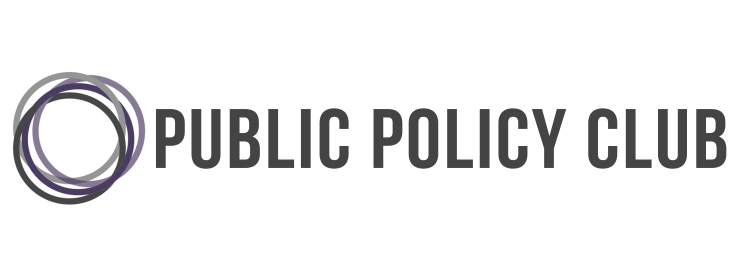By Maddison Lewis
Editors’ Note: This article was mostly written before the eight-week closure from 23 July. While this has been adjusted, some claims have been made in a different context.

COVID-19 is one of the most defining issues in recent history. What seemed like a distant problem that propped up in Wuhan, China, in 2019, quickly transformed the world – locking down countries, economies, and borders. Whether it is the introduction of new words such as ‘social distancing’ to our everyday vocabulary, or the more life-changing consequences of losing a job, there exist very few areas of our life that have not been touched by COVID-19 in some way.
One of the more recent issues surrounding COVID-19 that captured the nation’s eye is the closure of the Trans-Tasman bubble. The closure announced on 26 June on the back of a growing number of cases in Australia was the first time the bubble has been completely shut down. To add to the tumult, New Zealand saw Wellington switch to a Level Two lockdown following a visit from an Australian tourist who was infected with the contagious Delta variant of the virus.[1] And now, from 11:59pm on 23 July, the entire Trans-Tasman bubble will be closed for at least eight weeks (up to 17 September), due to the Delta variant outbreak in New South Wales not being controlled.[2]
Such events have brought the bubble into sharp focus, raising questions around its utility and the relative risks it presents. So, what is the case for the travel bubble? What arguments have been made in its favour by the government and other pundits? Equally important, what arguments have been made against it? Before we get there, let us lay out how the travel bubble works.
What is the Travel Bubble?
On 19 April, Prime Minister Jacinda Ardern announced the Trans-Tasman bubble saying that it “represents a world leading arrangement of safely opening up international travel while continuing to pursue a strategy of elimination”.[3] The bubble allows those who have spent 14 days in Australia or New Zealand to avoid quarantine when travelling between the two countries.[4] In addition, those travelling cannot have tested positive for COVID-19 nor be waiting for COVID-19 test results, and the bubble only applies to commercial flights – ships and private planes still have restrictions applied to them.[5]
On 26 June, rules changed to require that those travelling from certain states in Australia participate in pre-departure testing 72 hours from their flight, while travellers from other particular states were temporarily excluded altogether.[6] Now, with the outbreak in New South Wales, all Australian states are excluded for eight weeks, as the Delta variant has “materially changed the risk profile”, with infected persons carrying 1000 times more copies of the virus compared to the original strain.[2a] If there is anything to grasp about the bubble, it is that it is not a fixed, constant entity; it changes, develops, and will continue to respond to developments around the world.

The Case for the Bubble
Two critical arguments for the travel bubble that have been highlighted is its potential to boost the economy and tourism industry, and its ability to reunite families.[7][8] Tourism Industry Aotearoa (TIA) highlighted pre-COVID-19 that 13.6% of all New Zealand employees were connected to the tourism industry.[9] However, TIA’s 9-20 April survey suggested that “tourism businesses have on average seen their revenues cut almost in half and have shed 4 out of every 10 of their staff”. This equated to about 90,000 job losses.[10] With Australians making up nearly half of all visitors to New Zealand before COVID-19,[8a] these figures show how essential Australia is, for New Zealand’s tourism industry and employment.
While the government announced a 200 million dollar plan to support the industry in its Tourism Communities: Support, Recovery and Re-set Plan,[11] the travel bubble could potentially contribute a far larger one billion dollars to the economy as estimated by Tourism New Zealand.[12] In a similar vein, Chris Roberts, CEO of the TIA, said, “The Australian population is five times New Zealand’s, they are just as keen to travel, and we should stand to have a significant net benefit from free movement across the Tasman.”[13]
An additional argument for the Trans-Tasman bubble is its ability to free up spaces in New Zealand’s MIQ facilities. COVID-19 Response Minister Chris Hipkins estimated that 1000-1300 rooms would become free as a result of the bubble.[3a]
Moreover, not all arguments for the bubble have been primarily concerned with the economy. As an ANZ research report suggested, the Trans-Tasman bubble can “reunite families, and do wonders for relieving our collective sense of claustrophobia”, and that the issue goes beyond questions of GDP.[14] To put it another way, certain policy issues “are about more than ‘dollars’”.[15] When examining the case of the Trans-Tasman bubble, our analysis cannot only contain financial numbers and figures – it is worth considering non-material standards too.

Reasons for Concern
However, the travel bubble is not without its concerns. Tom Pullar-Strecker, Stuff Senior Business Journalist, expressed concerns in March that the bubble could have potentially adverse effects on GDP since spending by New Zealand travellers in Australia tended to increase around June to September. In contrast, spending in New Zealand by Australian travellers tended to decrease over this period. This could have “the negative effect of displacing more spending by Kiwis in New Zealand”, assuming a reversion to past travel patterns. Furthermore, Pullar-Strecker suggested that the bubble could have an impact on public perception of risk in New Zealand, affecting economic confidence.[15a]
Another more optimistic view which still forecasted positive effects on GDP, suggested that we ought to not rely on past patterns when predicting the impact of the bubble. This was because possible new trends such as travellers being more reluctant to travel or an influx of Australians wanting to visit family (when such travellers may tend to spend less on tourist activities) may impact our economic forecasts of the bubble.[15b] This concern around visitor versus tourist spending is particularly relevant considering Stats NZ reported Australian 27,000 visitors in April, with over 75% of these seeing family or friends.[16] Additionally, the Centre for Aviation (CAPA) said “discretionary travel has been dampened by the prospect of the bubble being closed”.[17]
Another concern expressed by Professor Michael Plank of the University of Canterbury in an April report by the Science Media Centre was that the freeing up of MIQ space could expose New Zealand to more risk if such spaces were used by travellers coming from high-risk countries even if more border workers are vaccinated.[18] Despite all this, Stats NZ’s provisional travel data for May showed “increases in border crossings.”[16a] This suggests that Tourism New Zealand’s forecast of a billion-dollar economic boost[11a] “seems to be heading towards reality”[8b] – at least before the eight-week closure took place. Given the unpredictable nature of COVID-19, short term boosts could continue to be overshadowed by new perils, as we are currently witnessing.

Putting this all together
So, what does all this mean? If anything, it reminds us of the complexity of such policy issues in a highly complicated and changing world. The story of the Trans-Tasman bubble is not a simple narrative and it requires nuance and careful analysis to understand its relevance to New Zealand. If anything, COVID-19 is a lesson for policy makers, that we need to be prepared to make new and innovative solutions to problems we have not seen before. The Trans-Tasman bubble could prove to be such a solution, despite the eight-week setback. This closure shows the potential for how our government can respond to dangers as they materialise.
While we may stand to benefit from the bubble when the situation stabilises, we also ought to diversify beyond just the tourism industry to ensure that there are other revenue streams to supplement our economic recovery, as concerns around the bubble become true. As the pandemic continues around the world, New Zealand will continue to watch the bubble closely and with high hopes for the future that one day we will return to normalcy.
Sources:
[1] https://www.theguardian.com/world/2021/jun/28/new-zealand-nz-travel-bubble-nsw-may-be-excluded-australia-covid-cases-rise
[2][2a] https://www.rnz.co.nz/news/national/447527/nz-government-suspends-quarantine-free-travel-with-australia-for-at-least-eight-weeks
[3][3a] https://www.beehive.govt.nz/release/trans-tasman-bubble-start-19-april
[4] https://covid19.homeaffairs.gov.au/new-zealand-safe-travel-zone
[5] https://www.immigration.govt.nz/about-us/covid-19/border-closures-and-exceptions/you-are-in-a-quarantine-free-travel-zone/you-are-coming-from-australia
[6] https://www.stuff.co.nz/travel/news/300344869/transtasman-bubble-to-reopen-to-select-states-with-predeparture-testing
[7] https://thespinoff.co.nz/the-bulletin/19-04-2021/the-bulletin-risks-and-benefits-loom-as-trans-tasman-bubble-opens/
[8][8a][8b] https://www.scoop.co.nz/stories/BU2105/S00048/weighing-the-prospects-and-benefits-of-trans-tasman-travel-bubble.htm
[9] https://www.tia.org.nz/assets/Uploads/Trans-Tasman-bubble-benefits-NZ-.pdf
[10] https://www.tia.org.nz/assets/Uploads/4-out-of-every-10-tourism-jobs-lost-in-last-year-survey-shows.pdf
[11][11a] https://www.beehive.govt.nz/speech/tourism-communities-support-recovery-and-re-set-plan
[12] https://www.rnz.co.nz/news/national/439782/tourism-new-zealand-forecasting-billion-dollar-economy-boost-if-trans-tasman-bubble-opens
[13] https://www.stuff.co.nz/business/industries/124584260/who-benefits-more-from-a-transtasman-travel-bubble–nz-or-australia
[14] https://www.anz.co.nz/content/dam/anzconz/documents/economics-and-market-research/2021/ANZ-Trans-Tasman-Bubble-Insight-20210409.pdf
[15][15a][15b] https://www.stuff.co.nz/business/opinion-analysis/124609487/why-a-transtasman-bubble-might-not-save-nz-from-recession
[16][16a] https://www.stats.govt.nz/news/trans-tasman-bubble-lifts-travel
[17] https://centreforaviation.com/analysis/reports/lockdown-risk-dampens-demand-for-au-nz-air-travel-bubble-560454
[18] https://www.scoop.co.nz/stories/AK2104/S00102/trans-tasman-travel-bubble-to-open-expert-reaction.htm



